Science fiction has always played a huge role in the popularisation of space. There are many examples of how people inspired by their favourite films, books, and computer games decided to connect their lives with the sky by becoming astronomers, aerospace engineers, pilots, or astronauts.
However, there is a flip side to this coin. Films, books and games have also given us a lot of different myths and legends related to space, which are unconditionally believed by a large part of the population, but which are actually very far from reality. And today we will analyse some of the most popular misconceptions that we “owe” to science fiction
Sounds in space
“No one will hear you scream in space” is the tagline of the film Alien. And it’s really true. In airless space, there is no environment necessary for the transmission of vibrations. Therefore, we will not be able to hear any sounds there. However, it is fair to say that sound can be transmitted not only through the air: for example, if a meteorite falls near an astronaut on the Moon, the vibrations will be transmitted through the lunar surface into the spacesuit. But if the astronaut jumps up at that moment and doesn’t touch the surface with his feet, he won’t feel anything.
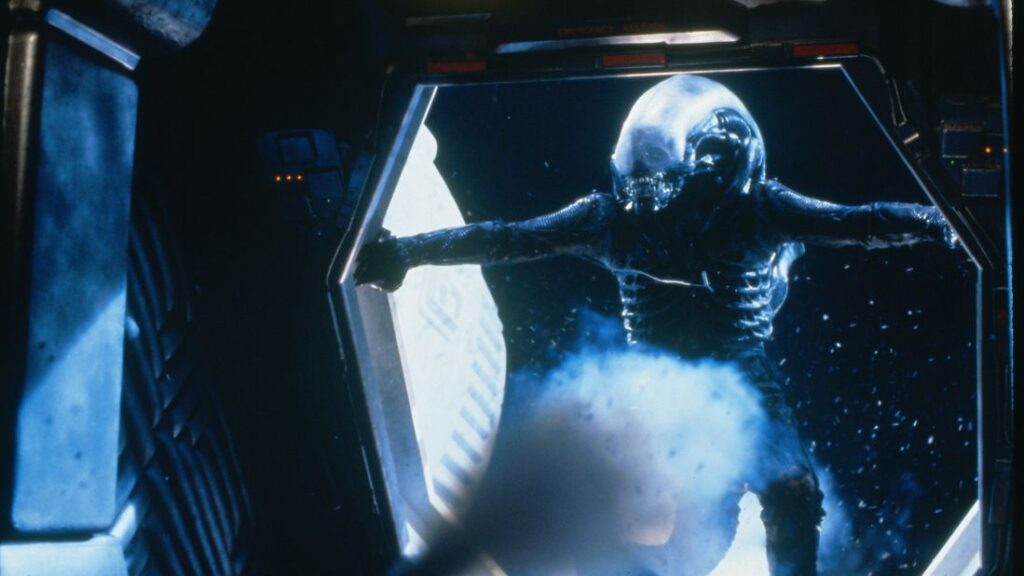
A still from the Alien movie
In any case, most films, TV series and computer games safely ignore these simple laws of physics to increase entertainment value. That’s why we hear the powerful roar of engines, deafening sounds of gunshots, explosions, spacecraft collisions, etc. But it’s worth noting that in recent years, cinema has seen a certain tendency to increase the realism of space scenes. Therefore, in some modern blockbusters, they do not add “extra” sounds.
There is another remarkable fact related to sound in space that is not taken into account in films and games. The fact is that there are no bodies in the solar system with the same atmosphere. They have different densities, chemical compositions, temperatures, and, of course, the speed of sound. This means that the same vibrations on different planets will sound completely different. For example, the pressure near the surface of Mars is on average 160 times lower than on Earth. Because of this, sound waves fade away very quickly there (however, the Perseverance rover still managed to record some sounds). On Venus, the density of the atmosphere is 90 times greater than on Earth, and near the surface it behaves like a liquid. Therefore, sounds there are likely to resemble the noise we hear underwater.
Lasers
Few space battle scenes do without episodes where ships attack each other with multi-coloured laser beams. Such scenes are as beautiful as they are far from reality.

Firstly, on Earth, we see laser beams due to dust particles in the atmosphere. In space, there is no air, so it would be physically impossible to see laser beams. Even under ideal conditions, we will only be able to see the very moment the beam hits an object, when part of the light is reflected.
Secondly, a laser beam is called a beam because it is a stream of radiation travelling at the speed of light. So, even if lasers could somehow be seen in space, they would be perceived by the human eye as light beams, not as intermittent multi-coloured blobs moving like solid bodies.
The deadly asteroid belt
We all remember the classic scene from the film The Empire Strikes Back. In an attempt to escape from his pursuers, Han Solo takes a suicidal step and directs his spaceship into the asteroid belt, which is a chaotic cluster of rocks that move in all directions and constantly collide with each other. Only incredible reflexes and luck help the heroes survive in a difficult situation.
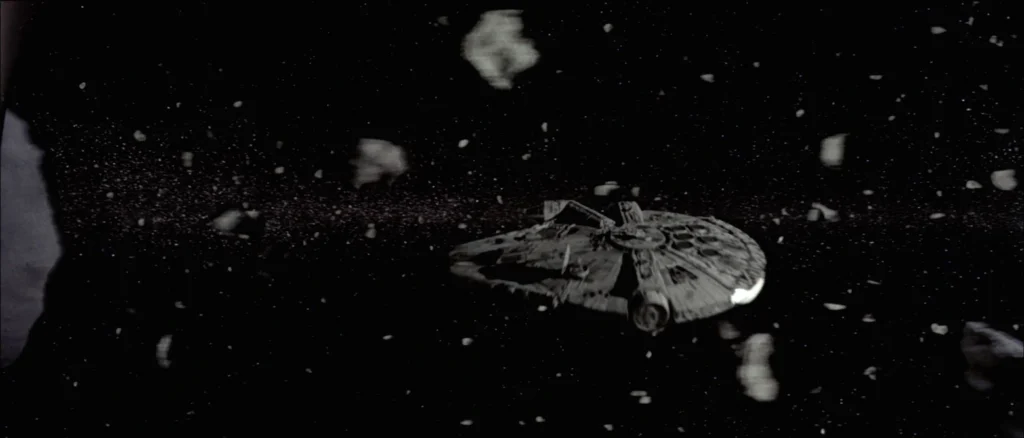
Still from The Empire Strikes Back movie
Of course, in a distant galaxy, the laws of the universe are different, so anything can exist there. But in our solar system, the picture is completely different. If we were to get to the Main Asteroid Belt, located between the orbits of Mars and Jupiter, we would not see anything unusual.
Yes, the Asteroid Belt consists of many billions of rocks ranging in size from tens of metres to hundreds of kilometres, but they are scattered over such a huge volume of space that the distance between even the smallest objects will be measured in thousands of kilometres. Thus, standing on the surface of one of the asteroids, we have virtually no chance of seeing at least one other asteroid with the naked eye.
It is fair to say that at the dawn of the space age, some scientists did have concerns about the possibility of exploring this area of space. It was assumed that it was filled with a large amount of dust that could disable space technology. However, back in the 1970s, the Pioneer and Voyager probes proved that these fears were completely unfounded. Today, the risk that a spacecraft will collide with an asteroid while crossing the Asteroid Belt is estimated at about one in a billion. For comparison, the chance of being attacked by a shark while swimming in the sea is 1 in 11.5 million, and the probability of dying by falling out of bed is 1 in 2 million.
Neutralising killer asteroids
Thanks to cinema, we know very well that the best way to get rid of a dangerous asteroid heading towards the Earth is to land a team of drillers on its surface, who will make a well and plant a nuclear bomb there. After that, you just need to press the red button and the problem is solved.
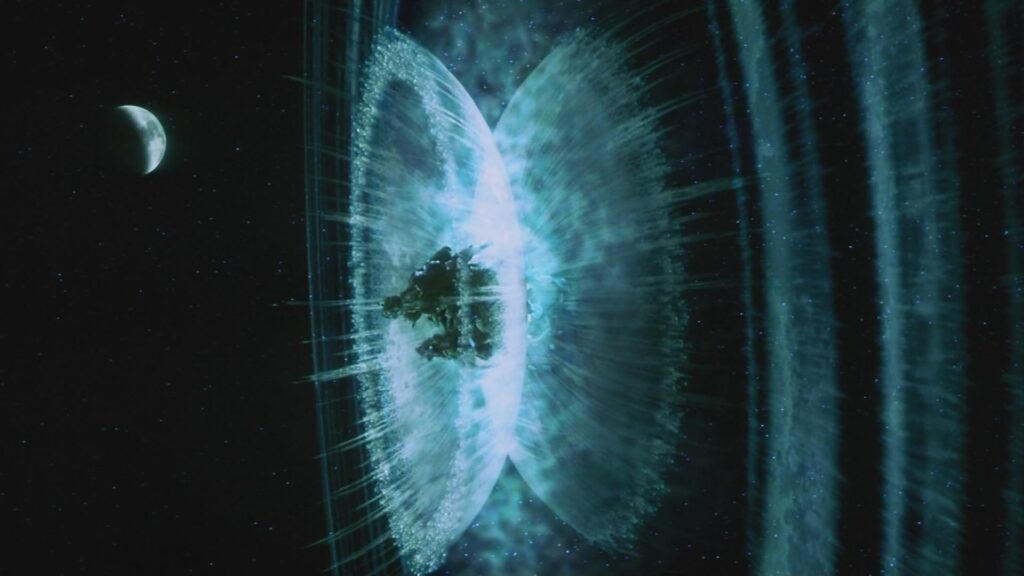
A still from the Armageddon movie
Unfortunately, the reality is a little more complicated. Indeed, some projects to combat potentially dangerous asteroids involve the use of nuclear weapons. But using them in the way shown in Armageddon movie makes no practical sense. This technique is incredibly complicated and, frankly, almost ineffective. In addition, many asteroids are essentially “garbage heaps” consisting of clusters of debris bound by gravity. Therefore, the most effective way to affect such an object would be to detonate a nuclear bomb at some distance from the surface, which would change its trajectory.
In any case, the use of a nuclear bomb is not the only possible option in such a situation. For example, a kinetic weapon could be used — a special impactor that would strike the dangerous body and slightly change its orbit. NASA already has experience of such an operation: in 2005, the Deep Impact probe “bombarded” comet Tempel 1 (9P/Tempel). In 2022, the experiment was repeated — this time with the satellite of the asteroid Didymos (65803 Didymos). The DART spacecraft crashed into it.
If time permits, a dangerous object can be deflected without the use of weapons, for example, by installing a rocket engine on its surface. Or you can use a gravity tug — a special rather massive device whose gravity will affect the asteroid and gradually change its orbit. The optimal strategy will depend on the specific physical characteristics, orbit and size of the body. Therefore, no matter what we are shown in films, there is no universal recipe for protecting the Earth from hazardous objects.
Spacewalk without a spacesuit
The creators of science fiction films rarely resist the temptation to show a scene in which one of the characters is thrown into space without a spacesuit. What happens next usually depends on the director’s imagination and the age rating. In some films, people are literally blown away and then explode. The direct opposite of this are scenes like those shown in the films Mission to Mars and Inferno, where the characters in space instantly freeze, turning into ice blocks.
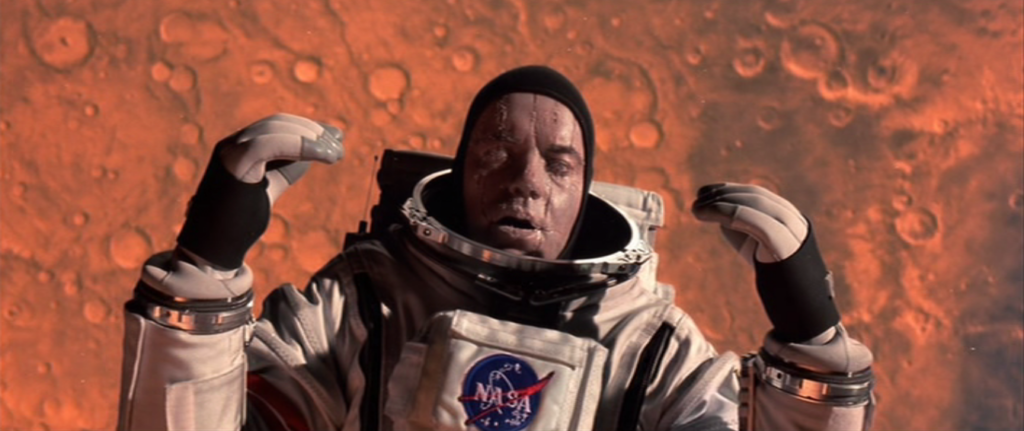
A still from the Mission to Mars movie
But does any of these episodes correspond to reality? The answer is nope. Instant freezing in space is physically impossible for one simple reason: the vacuum is neither cold nor hot — it is “empty”. Due to the absence of a material medium, convective heat transfer is impossible. Heat will not be lost quickly and instant freezing will not occur. That’s why one of the main challenges facing spacecraft designers is not freeze protection, but the removal of excess heat.
Another myth about exploding people is also not true. Of course, explosive decompression can lead to a number of very unpleasant effects. For example, some soft tissues will produce rapid water vapour. This can cause the body to swell and cause numerous capillary ruptures. However, human skin is still strong enough to burst: during the rapid ascent of divers from a depth of 50-80 m, pressure drops greater than those between vacuum and the atmosphere we are used to, have been observed, and yet nothing like this has ever happened.
The idea that blood can boil in a vacuum is also not true. Inside the body, it is under higher pressure than in the external environment. Typically, the blood pressure is 120/75 mmHg. And if the external pressure drops to zero, with a blood pressure of 75 mmHg, the boiling point will be approximately 46°C, which is significantly higher than the body temperature.
So what happens to a person without a spacesuit in space? Animal experiments and a few accidents with test centre employees allow us to draw a rough picture. Once in airless space, a person will remain conscious for 9-12 seconds, during which they can still do at least something to save themselves. During these first seconds, the most dangerous consequences are the effects of explosive decompression. If you try to hold air in your lungs during a sharp drop in pressure, it can lead to their rupture. After loss of consciousness, the heart will beat for 60-90 seconds. If you return the person to an oxygenated atmosphere during this time, it is likely that they will be saved. But if the heart stops, resuscitation will be useless.
So, survival after a short stay in a vacuum is quite possible. Although it certainly depends on the specific circumstances and the speed of assistance. An example of a successful outcome is an incident that occurred in 1966. During the testing of a new NASA space suit, a sudden depressurisation of the suit occurred in the pressure chamber, where all the air had been pumped out. 14 seconds later, test pilot Jim Le Blanc lost consciousness. After about 30 seconds, the pressure in the chamber was restored. After that, Le Blanc quickly regained consciousness. According to him, the last thing he remembered before he lost consciousness was saliva boiling on his tongue. Fortunately, this incident did not cause any serious damage to the test subject’s health.
Lost in space
Another myth, which is so popular with science fiction film directors, is the situation when an astronaut is blown into outer space away from the ship. Everyone knows what happens next — the chaotically rotating figure will disappear forever into endless space.
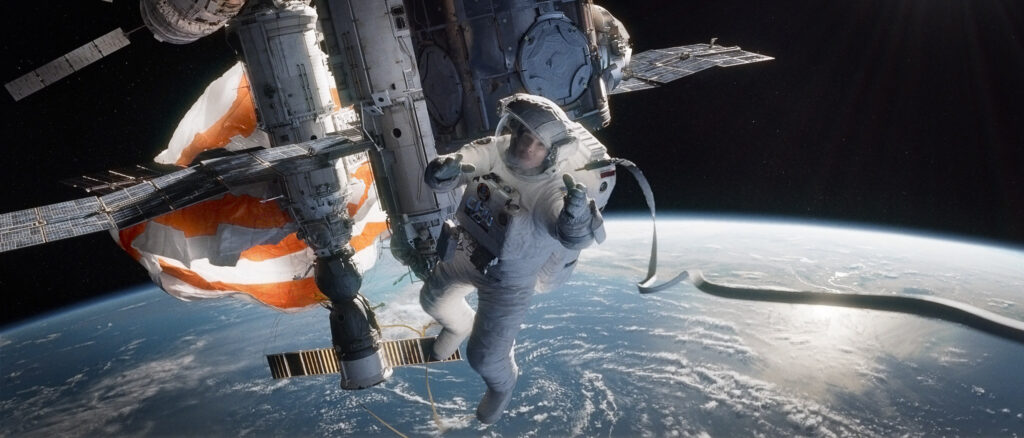
A still from the Gravity movie
Of course, any spacewalk involves significant risk. At the beginning of the space age, dangerous incidents occurred several times in Earth orbit, when there were chances that the spacewalker would not be able to return to the ship. That is why during the so-called “extravehicular activity” (EVA), astronauts must wear a safety harness and always carefully check its attachment.
However, a situation in which an astronaut finds himself overboard without a safety harness is not an automatic death sentence. To begin with, NASA spacesuits designed for spacewalks are equipped with a special SAFER safety device. In fact, it is a miniature propulsion system designed to rescue astronauts who have been blown away from the spacecraft. Fortunately, there has been no practical need to use it so far.
But even if you don’t have such a system at hand, there is still a chance of rescue. For example, if an astronaut “flies away” from a space station moving in low Earth orbit in a direction roughly perpendicular to its trajectory, due to the laws of celestial mechanics, in about 90 minutes their paths will cross again at the same point, and the astronaut will have the opportunity to return aboard. Of course, this will only work if the station does not manoeuvre and the astronaut has enough oxygen to last (usually, spacesuits are designed for 9 hours of autonomous operation). Otherwise, there is no way to rescue the astronaut.
The fictional planet Phaeton
Soon after the discovery of the first asteroids, it was hypothesised that they were the fragments of a destroyed planet that once stood between the orbits of Mars and Jupiter. According to one version, it was torn apart by Jupiter’s gravity, according to another, it collided with some large object. This hypothetical planet was named Phaeton.
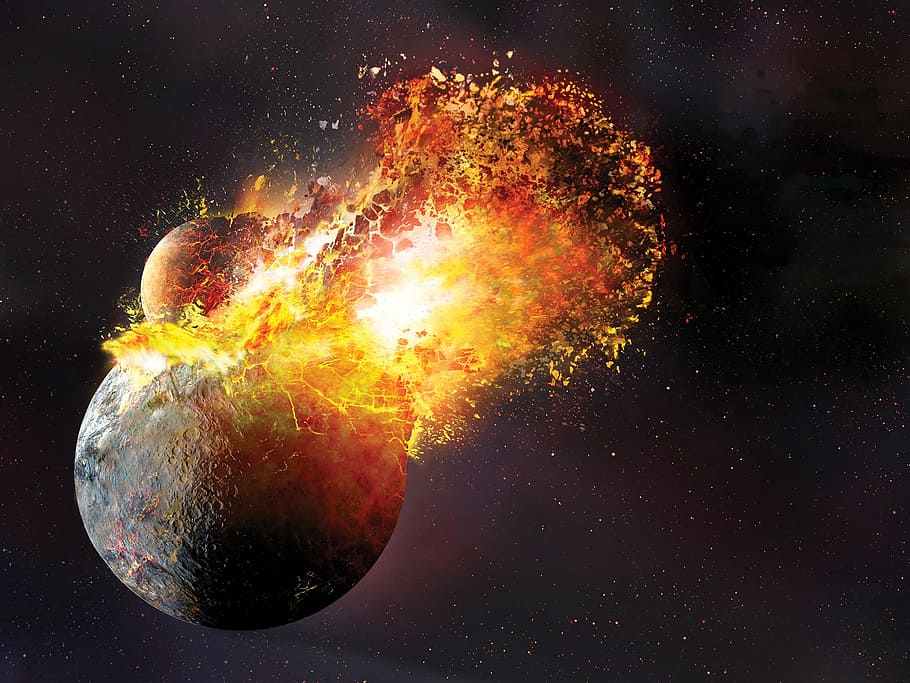
Science fiction writers loved this idea. Some of them later developed it creatively, inventing a powerful civilisation that once existed on Phaeton and destroyed its world either in a fratricidal war or in a failed experiment.
Alas, such stories are fascinating, but they cannot be true. We now know that there have never been and could never be large dead planets in the Asteroid Belt. It’s all about Jupiter. Its gravitational influence in this region is so great that it simply did not allow the matter from the protoplanetary disc to gather into a single object. As a result, we have a belt consisting of a kind of “construction waste” that remained unused during the formation of the Solar System. In addition, the total mass of the asteroids is not that large — it is only 4% of the mass of the Moon, which is not enough even for a very small planet.
However, although Phaeton never existed, computer modelling results suggest that a small rocky planet could theoretically form between Mars’ orbit and the asteroid belt. However, due to the instability of the orbit, such a body would not last long and would most likely fall into the Sun in a few hundred million years. In any case, even if such a planet did exist, it has nothing to do with asteroids.
Sudden death of the Sun
In conclusion, let’s talk about our Sun. Many disaster films are based on the concept that something bad happens to it. For example, it explodes without any warning. Or it turns into a red giant and threatens to swallow our planet, as shown in the recent Chinese blockbuster Wandering Earth. Or, on the contrary, it begins to rapidly fade away.
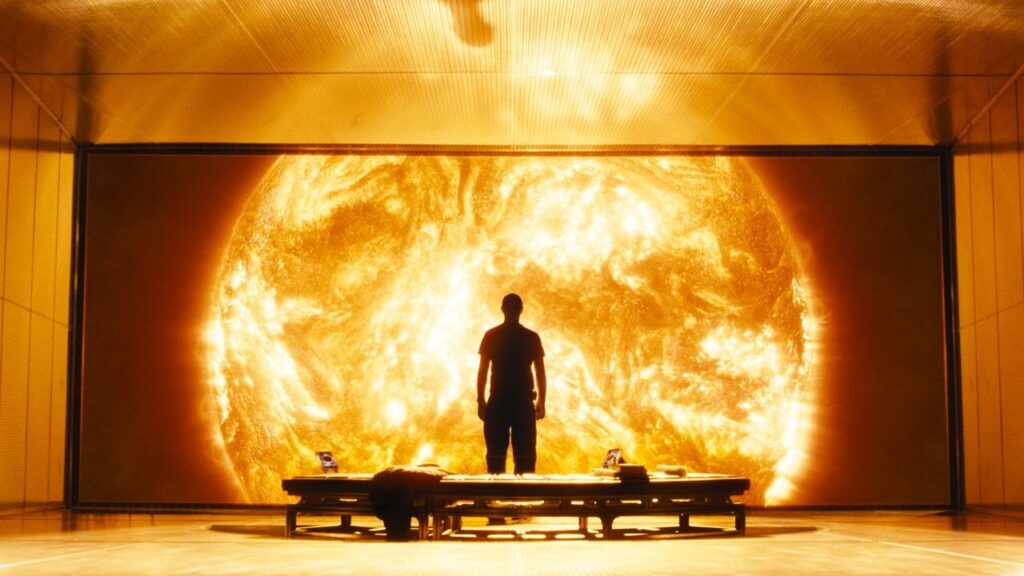
A still from the Inferno movie
All these are the wild fantasies of screenwriters. Compared to the vast majority of our cosmic neighbours, the Sun is a very stable star. This contributed to the emergence and development of life on at least one of its planets. Yes, it sometimes experiences powerful flares, but even superstorms like the Carrington event of 1859 can only damage technology, not destroy all life on our planet. The Sun is also not in danger of turning into a supernova — for this to happen, its mass would have to be about eight times greater.
As for the red giant scenario, it is true that in the future our luminary will increase its luminosity, grow in size and absorb the inner planets of the Solar System (perhaps even the Earth), after which it will shed its outer atmosphere and turn into a dim white dwarf. But there is one “but”. All this will happen in 6-7 billion years. So for now, we can sleep well. The Sun will definitely not undergo any dramatic changes in our lifetime.

